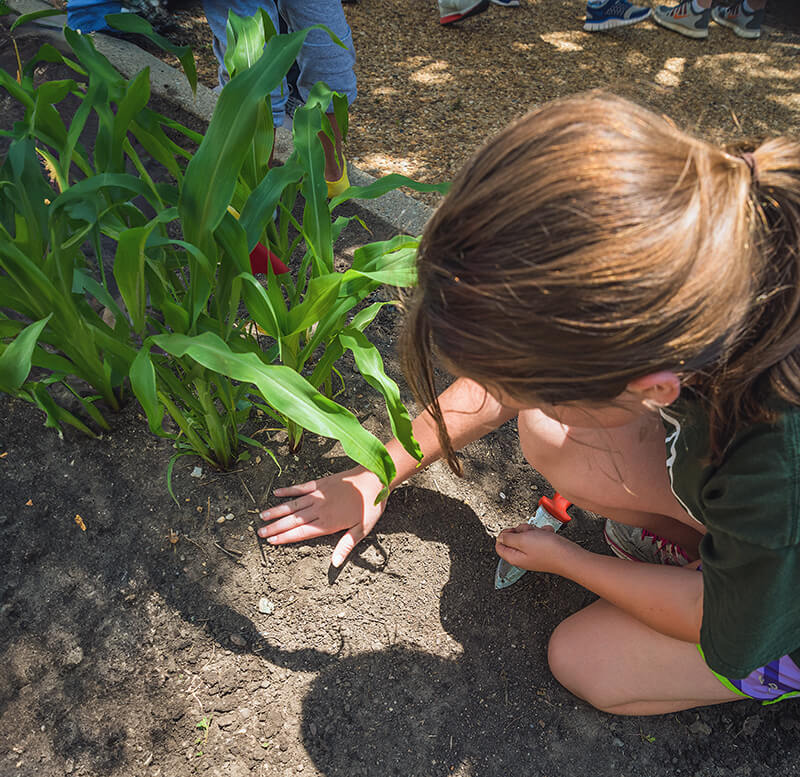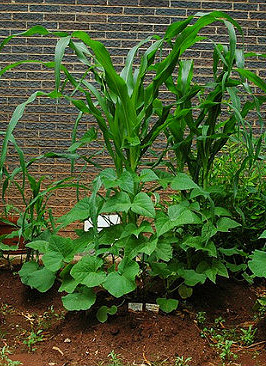Background Agricultural Connections
Native Americans from different parts of North America use a wide range of agricultural techniques. Perhaps the best known is the inter-planting of corn, beans and squash – a trio often referred to as the “three sisters.” Cultivating these companions in your school garden, a small planting near your school, a large container or even indoors, can inspire studies of Native American customs and nutrition, and investigations of plant growth and relationships.
In a "three sisters" planting, the three plants benefit one another. Corn provides support for beans. Beans, like other legumes, have bacteria living on their roots that help them absorb nitrogen from the air and convert it to a form that plants can use. Corn, which requires a lot of nitrogen to grow, benefits most. The large squash leaves shade the soil, prevent weed growth, and deter pests. The three sisters also complement each other nutritionally. Corn supplies carbohydrates and a variety of amino acids. Beans have protein, including two amino acids that corn lacks. Squash contributes vitamin A.
It’s hardly surprising that these crops were considered by many Native Americans to be "special gifts from the creator." They play an important role in the agriculture and nutrition of many Native people of the Americas. Because of the sisters’ central role as sustainers of life, a host of stories, customs, celebrations and ceremonies are associated with them.
In this lesson students will begin to understand a portion of the agricultural history of our nation by learning how Native Americans preserve natural resources and soil nutrients to harvest crops.

